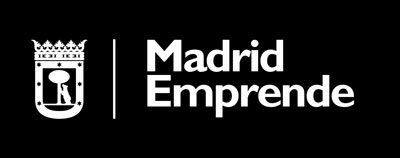- There are several and varied deductions to encourage the performance of certain economic or business activities.
- The Tax Agency considers technological innovation to be that activity that results in a technological advance in obtaining new products or processes, or substantial improvements to existing ones.
In this article, we are going to explain one of the tax deductions designed to promote research and development activities in Spain. Specifically, we will talk about technological innovation activities: what they are, their scope and the amount to be deducted.
What activities are considered research and development?
Before addressing tax deductions, it is necessary to understand what activities fall into the research and development category. According to Tax agency, this concept encompasses “the original and planned inquiry aimed at discovering new knowledge and its application in the manufacture of new materials or products, as well as in the design of production processes and systems.” The substantial technological improvement of already existing elements is also included.
It is important to note that these activities are not limited exclusively to scientific environments, but also encompass initiatives such as the design of samples for the launch of new products, the creation of non-marketable prototypes and pilot projects. Even creating and configuring advanced software for new products or services is considered research and development activity.
It should be noted that the expenses considered as technological innovation are those directly related to these activities, effectively applied to their realization, and specifically individualized by projects.
Technological innovation: what does it really mean?
Now, we will delve into the concept of technological innovation, crucial to understanding the tax deductions in question. The Tax Agency considers technological innovation to be that activity that results in a technological advance in obtaining new products or processes, or substantial improvements to existing ones.
To evaluate innovation, three fundamental criteria are applied:
- New or substantial improvement:
The resulting product or process must be genuinely new or incorporate significant improvements. An essential change is required that modifies basic and intrinsic characteristics.
- From a technological point of view:
Innovation must occur in the technological field of the process or product.
- From a subjective point of view:
It is not necessary to present a completely new product on the market, but it is necessary to develop something unprecedented for the entity that carries it out, in accordance with the definition of innovation contained in the Oslo Manual of 2005.
Basis of deduction
The base of the deduction will cover the period's expenses on specific activities that promote technological innovation corresponding to:
- Technological diagnosis:
It includes the identification, definition and orientation of advanced technological solutions, regardless of the results achieved.
- Industrial design and production process engineering:
This concept encompasses the conception and preparation of plans, drawings and supports intended to define descriptive elements, technical specifications and operating characteristics necessary for the manufacture, testing, installation and use of a product. In addition, it extends to the production of textile samples, the footwear industry, tanning, leather goods, toys, furniture and wood.
- Acquisition of advanced technology:
Includes obtaining patents, licenses, know-how and designs. It should be noted that amounts paid to persons or entities linked to the taxpayer will not be considered for the deduction, and the base corresponding to this concept may not exceed the amount of 1 million euros.
- Certification of compliance with quality assurance standards:
This contemplates obtaining the certificate of compliance with the quality assurance standards of the ISO 9000 series, GMP or similar. The expenses corresponding to the implementation of these standards are not included.
How much can you deduct?
Now, what is the financial benefit that these activities can bring to companies? The applicable deduction percentage is 12% of the expenses incurred in the tax period for research and development.
Patent box
The patent box is a legal figure that has the objective of promoting the economic growth of companies through intangible assets such as patents, utility models, complementary certificates for the protection of medicines and phytosanitary products, legally protected drawings and models, which derive from activities of research and development and technological innovation, and registered advanced software derived from research and development activities.
The patent box allows a high percentage reduction of the income to be integrated into the tax base (immediate tax exemption), coming from the transfer of the right to use or exploit said intangible assets.
Its application in Spain is regulated by article 68 “Reduction of income from certain intangible assets” of the Law 6/2018, of July 3, on General State Budgets for the year 2018, which modified article 23 of Law 27/2014, of November 27, on Corporate Tax.

